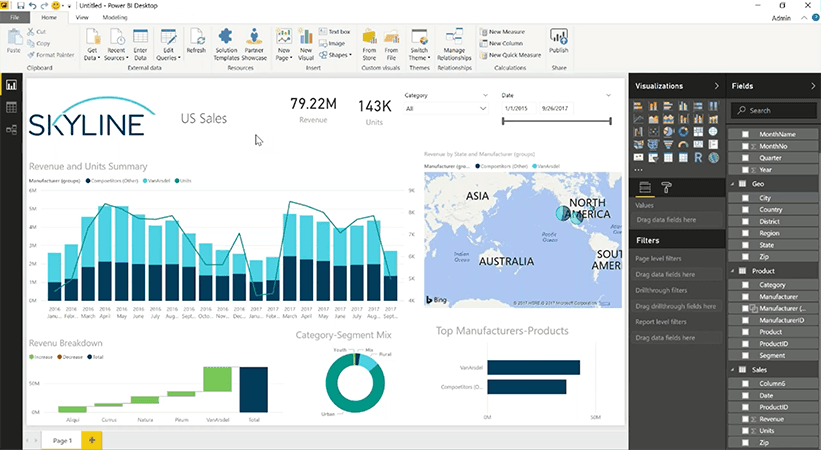Baeugi News Hub
Your source for the latest news and insightful articles.
Dancing with Data: How Visualization Software Moves Your Insights
Unlock powerful insights! Discover how visualization software transforms data into stunning visuals that drive decisions. Dive in now!
Top 5 Visualization Software Tools to Transform Your Data Insights
In today's data-driven world, having the right visualization software tools at your disposal is crucial for transforming complex data into actionable insights. Visualization not only makes data easier to understand but also helps in identifying trends, patterns, and anomalies that might be missed in raw data. Here are the top 5 visualization software tools that can elevate your data analysis:
- Tableau: Renowned for its user-friendly interface and powerful analytical capabilities, Tableau allows users to create stunning, interactive dashboards that bring data to life.
- Power BI: A Microsoft product, Power BI integrates seamlessly with other Microsoft tools and is perfect for creating reports and visualizations that are easy to share.
- QlikView: This tool is known for its associative data model, which lets users explore data from multiple sources easily.
- D3.js: A JavaScript library for producing dynamic, interactive data visualizations in web browsers, perfect for developers looking for custom solutions.
- Google Data Studio: A free tool from Google, it allows users to turn their data into informative, fully customizable dashboards and reports.

How to Choose the Right Data Visualization Software for Your Needs
When selecting the right data visualization software for your projects, it’s crucial to first assess your specific needs. Begin by identifying the type of data you will be working with, as different tools excel in various areas such as real-time data, big data, or geospatial data. Consider the complexity of the visualizations you wish to create; some software is tailored for simple graphs and charts, while others can handle intricate dashboards and interactive elements. Additionally, evaluate the user experience – a software that is intuitive and user-friendly can save you time and improve your productivity.
Another important factor to consider is the integration capabilities of the software. Ensure that it can seamlessly connect to your data sources, such as databases, spreadsheets, or cloud services. Furthermore, think about the collaboration features if you are working in a team, as this can enhance communication and streamline the decision-making process. Lastly, take advantage of free trials or demos offered by many software providers to test functionality and interface before making a commitment. By carefully evaluating these aspects, you'll be well-equipped to choose the data visualization software that best fits your needs.
What Are the Key Benefits of Using Data Visualization in Decision Making?
Data visualization plays a crucial role in effective decision-making by transforming complex datasets into visual representations. This process makes it significantly easier for decision-makers to identify patterns, trends, and correlations that may not be immediately obvious in raw data. For instance, interactive dashboards and graphical analyses allow stakeholders to gain insights at a glance, enabling them to make informed choices promptly. Moreover, data visualization enhances communication within teams by providing a shared understanding of metrics and performance indicators.
Another key benefit of data visualization is its ability to simplify the analysis of large volumes of information. Complex data sets can be overwhelming, but by using charts, graphs, and other visual tools, organizations can distill vast amounts of data into digestible formats. This simplification leads to better retention of information and can spark meaningful discussions among team members. Ultimately, leveraging data visualization not only improves the efficiency of the decision-making process but also fosters a data-driven culture within the organization.